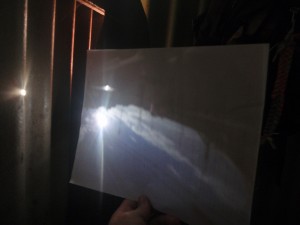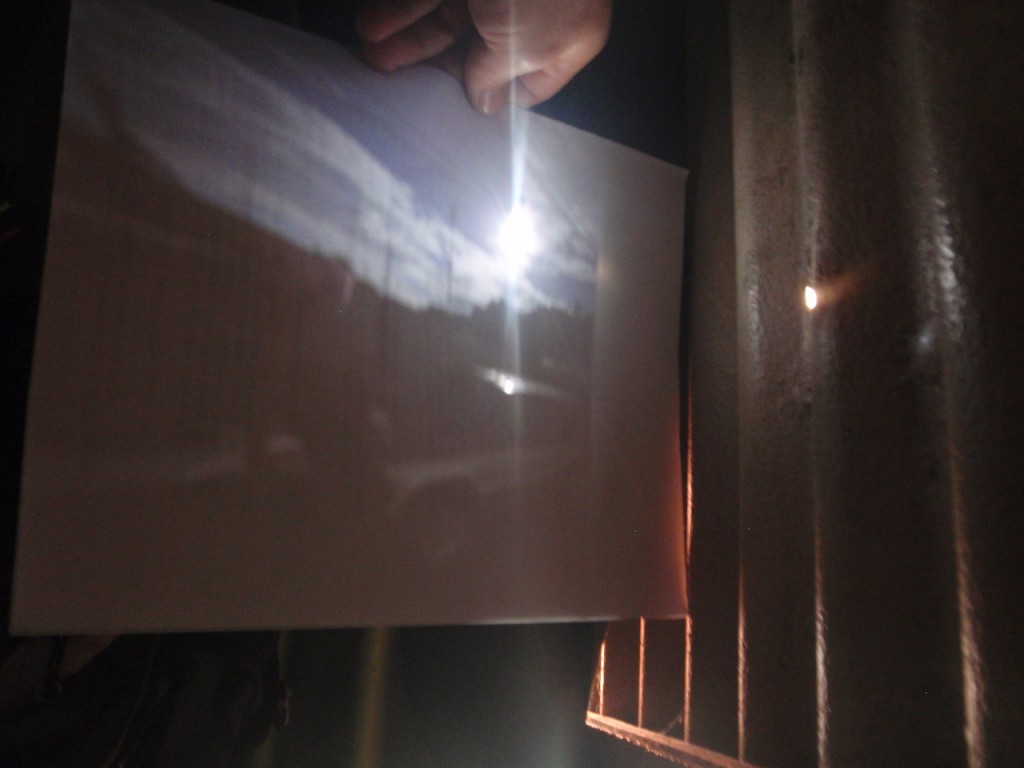If you’ve ever gotten the chance to sleep inside a “tin shack”, or a structure with walls and a roof of corrugated steel, you may have learned pretty quickly how the thin walls don’t separate you very well from what’s going on outside. In this case, immediately outside the room I’m describing is a dusty street, and although I am inside the room I can hear conversations from people outside my room talking late into the night. I can smell the frying foods from Coyol’s taco shack on weekends, the odor of exhaust when the neighbor leaves in the morning, or catch wafts of rancid smoke if someone has ducked into the alley to light up. There are lots of noises, too, like the tinkling giggles from kids jumping rope or playing “landa” (tag). The mornings are particularly noisy, with the fighting cocks crowing anywhere from 3 A.M. onward, dogs barking, and cars revving up. On weekends, a woman and child walk by selling “nacatamales,” singing-songing the word out shrilly as they walk the streets, drawing out each syllable in an unmistakable rhythm, each progressive syllable shorter than the one before it – “naaaaaaaaaacaaaaataaaamaaales.”
However, corrugated steel walls are completely light-proof, and there are no windows in the room. The only light that peeps into my room in the early morning is the bright golden circles of light irregularly pocking the wall furthest from the street. These perfectly circular bubbles of light are created by the morning sunlight piercing through the nailholes in the patchwork of steel sheets making up my wall. I lay awake in the mornings sometimes, fascinated by the bright spots of light on my wall. Part of my fascination is the thin sliver of light the sunbeam forms through the glittering fibers of dust in the air. Each pinprick of light where a removed nail has left a hole leaks an unnaturally straight beam of sunlight across my room to form small yellow bubbles of light on the far wall, about two inches in diameter.

Today, however, it dawned on me exactly what each of those little spots of light really is. It is the sun. Not just sunlight, forming a nondescript blob of light on my wall. It is an exact image of the sun itself… and, if you look a little bit closer, you discover that the entire scene outside my room is also projected on my wall, not just the sun. You can see clouds, blades of grass, walls, cars, and sometimes even people! Each spot of light, then, is a sun in the center of a perfect, inverted image of the scene outside my room.
I’ll explain. I pieced this together one bit at a time, and when it finally dawned on me what I was seeing, I spent the whole morning giddy with fascination, realizing that I had just discovered that I am seeing before my eyes a “camera obscura,” a dark room with a pinhole that projects an inverted image of the outside world on the opposite wall. After a month of looking curiously at the light spots on my wall each morning, I finally pieced everything together. Part of the fun was discovering that a childhood science experiment and a lifelong hobby (photography) has been plastered on my wall each morning, but I didn’t put all the pieces together until now.
 It helps if you understand how a camera works, or better yet, a “camera obscura.” My entire room is a camera obscura, a “dark chamber” upon which the dawning sun is photographed every morning. This is a bit difficult to explain, I realize as I write this, but absolutely fascinating to see unfold before my eyes. A camera works because the shutter opens a small hole of light that chemically burns an inverted replica of the outside world onto the film that walls the back of the camera. Without that “film freeze,” the inverted image is dynamic and moving, like the way our eyeball works.
It helps if you understand how a camera works, or better yet, a “camera obscura.” My entire room is a camera obscura, a “dark chamber” upon which the dawning sun is photographed every morning. This is a bit difficult to explain, I realize as I write this, but absolutely fascinating to see unfold before my eyes. A camera works because the shutter opens a small hole of light that chemically burns an inverted replica of the outside world onto the film that walls the back of the camera. Without that “film freeze,” the inverted image is dynamic and moving, like the way our eyeball works.
I finally drew all the links together when I suddenly noticed that the small circles of light were changing ghostily, with random patterns creating cloudy patterns over the circles. I looked more closely, and suddenly saw that I was seeing an inverted version of the clouds in the sky pass in front of the sun. In some of the projections, the sun was sliced in half by thin black lines, or the top of it had what looked like a spiky “hairdo.” I realized that what I was seeing was the orb of the sun, blocked by powerlines, trees, or clouds. That “hairdo” was the waving grass blocking the bottom of the sun… in the inverted image it looked like waving hair on top.
 Each of these pinpricks, then, is projecting the entire scene outside my window onto the walls of my darkened room. Some splay the outside scene across my floor. Because there are ten nailholes letting light through, there are ten projections hitting the wall, all blending together and making it hard to distinguish any specific shapes or images.
Each of these pinpricks, then, is projecting the entire scene outside my window onto the walls of my darkened room. Some splay the outside scene across my floor. Because there are ten nailholes letting light through, there are ten projections hitting the wall, all blending together and making it hard to distinguish any specific shapes or images.
To single one image out, I picked up a piece of paper and held it about 6 inches from a single nailhole. That’s when the outside scene really came into focus. I could see a perfect, but somewhat blurry, replication of the world outside my room. It was in color – the sky was blue, and the plants looked green! It was detailed… I could see my upside down car parked outside, and the top of Coyol’s taco shack. From time to time I could even catch a person walking by upside down.
I hear what sounds like sand being thrown across the sheets of steel. I touch one of the nailholes and realize it is wet. Coyol has woken up and he is tossing water on the outside of my room… I don’t know why, but he’s watering down the side of the house.

The images in this post are photographs of a dynamic projection of light. They are taken of the piece of paper I held up to the nailholes of light. The sun and sky are pretty easy to pick out. If you look closely you can see some details – like the tires and frame of my trooper. You can make out some tall grass and shacks on the hill, too.
 The video below shows a “slice of life” from La Carpio, with some videos and images from celebrations and everyday life. Some explanation may help, however.
The video below shows a “slice of life” from La Carpio, with some videos and images from celebrations and everyday life. Some explanation may help, however.





